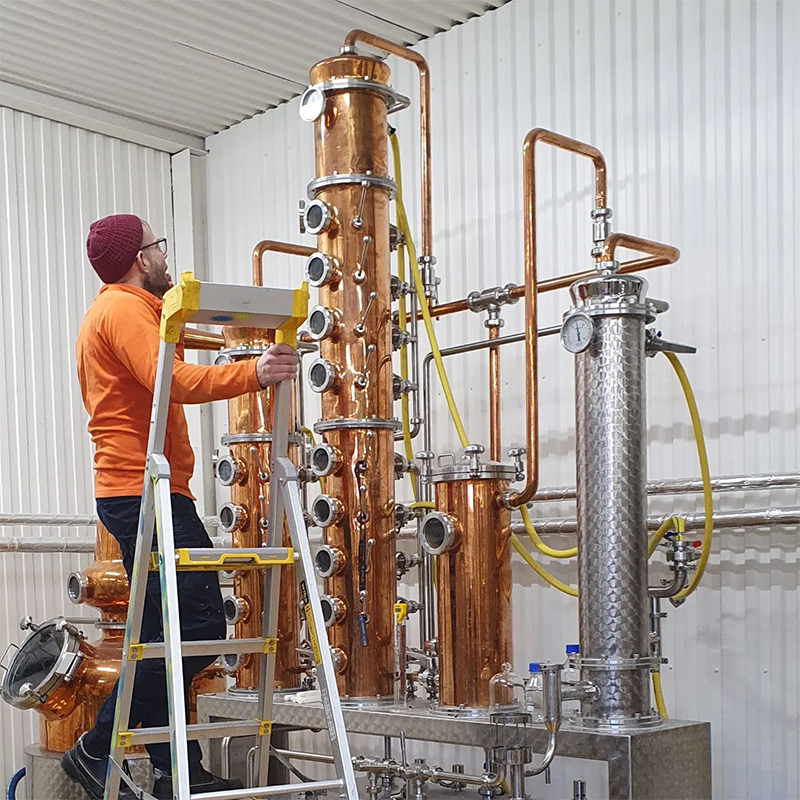
How a Column Still Works
A column still (also called a continuous still) is an advanced distillation device that has undergone numerous improvements, making it an indispensable tool for producing spirits ranging from vodka to whiskey. Compared to pot stills, column stills can operate continuously, are more efficient in production, and are capable of achieving alcohol concentrations up to 95%.
A typical column still consists of two main parts: the analyzer and the rectifier. Within these columns, the positions of the distillation plates or trays are carefully designed to promote the separation of alcohol and other compounds. Here is a detailed description of how a distillation column works:
Workflow of a distillation column
1. Feeding and heating:
The distillation process begins with the introduction of the raw material (preheated liquid mixture) into the middle section of the analyzer column. Fresh steam is simultaneously injected into the bottom of the column. The steam rises and comes into contact with the descending raw material. The heat generated by the steam causes the alcohol and other volatile compounds in the raw material to evaporate.
2. Steam rises:
The evaporated components rise through the distillation column, passing through a series of plates or trays. These plates serve as individual distillation stages, where repeated cycles of evaporation and condensation occur. The plates are usually perforated in design to maximize the interaction between the rising vapor and the descending liquid.
3. Reflux and Condensation:
As the vapor rises, it encounters a lower temperature near the top of the distillation column. This temperature gradient is maintained by a pre-condenser, which circulates a coolant to create a controlled cooling effect. The lower temperature causes the vapor to condense into a liquid, which then flows downward through the column. This process, called reflux, ensures that heavier compounds are removed while lighter, more volatile compounds continue to flow upward.
4. Component Separation:
The constant interaction between the vapor and liquid within the column causes the components to stratify according to their boiling points. Lighter compounds, including ethanol, condense on the higher plates, while heavier compounds remain lower in the column or exit the bottom as waste. This separation is essential for producing high-purity alcohol and removing undesirable compounds such as methanol.
5. Product Collection:
The purified alcohol vapors are collected at specific points within the column, depending on the desired purity and characteristics of the final product. These vapors are directed through a condenser, where they are cooled and converted back to liquid form. The resulting distillate is then collected for further processing, blending, or aging.

Column stills are favored for their ability to operate continuously, making them ideal for large-scale production. Their design allows for precise control of the distillation process, resulting in high-purity alcohol and efficient separation of unwanted compounds.








